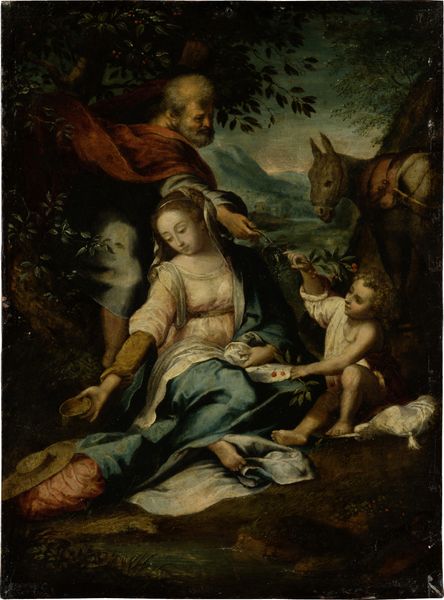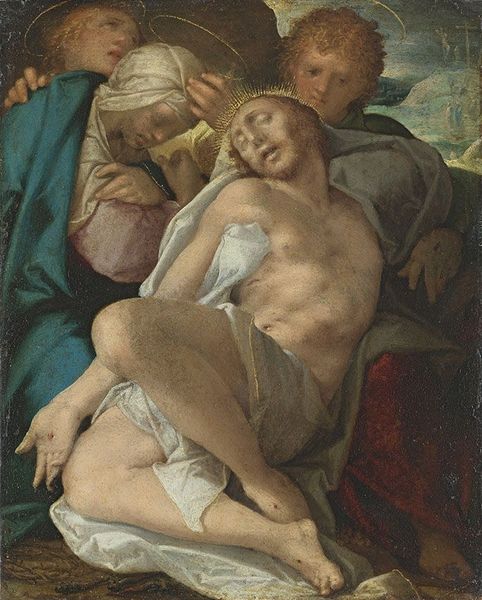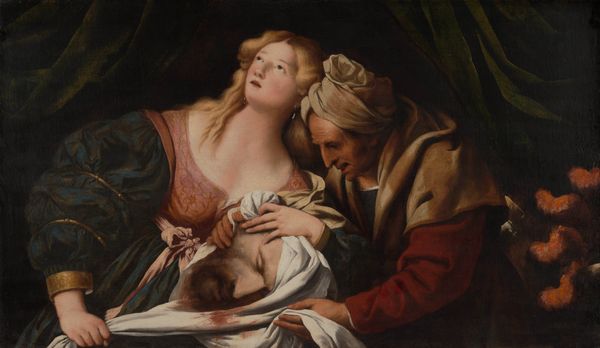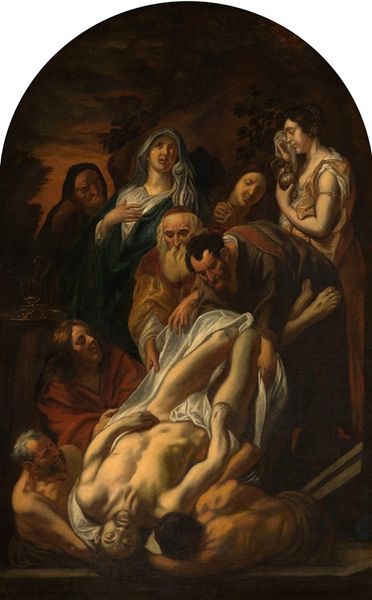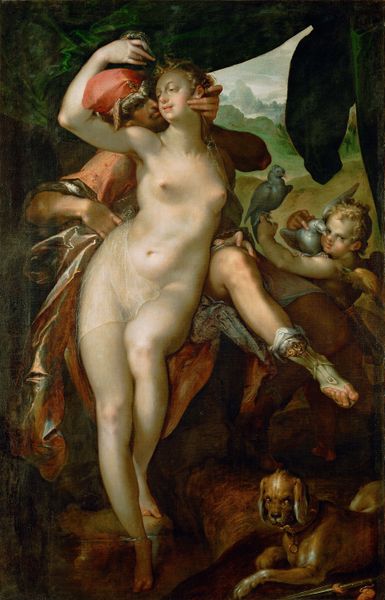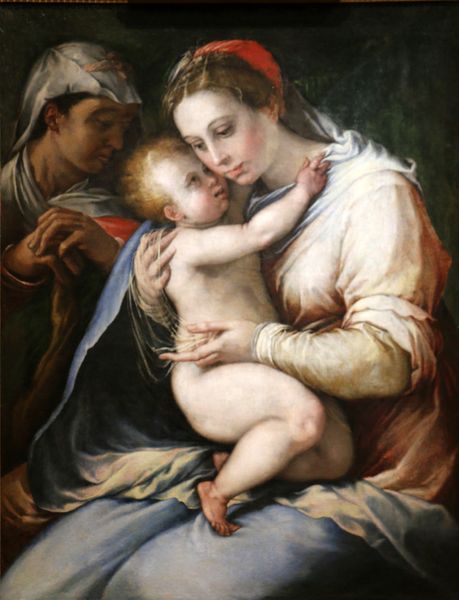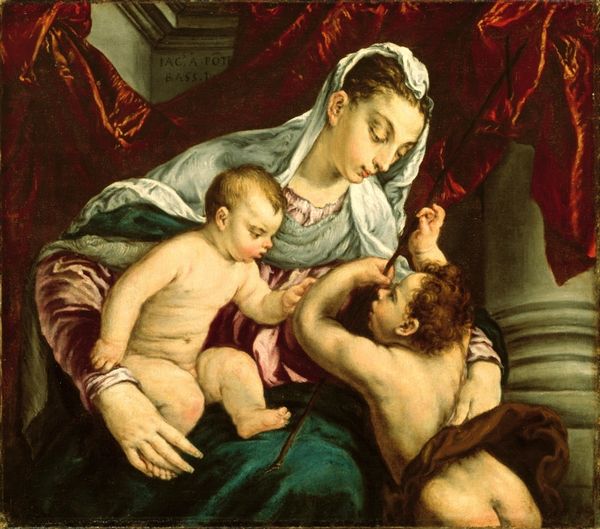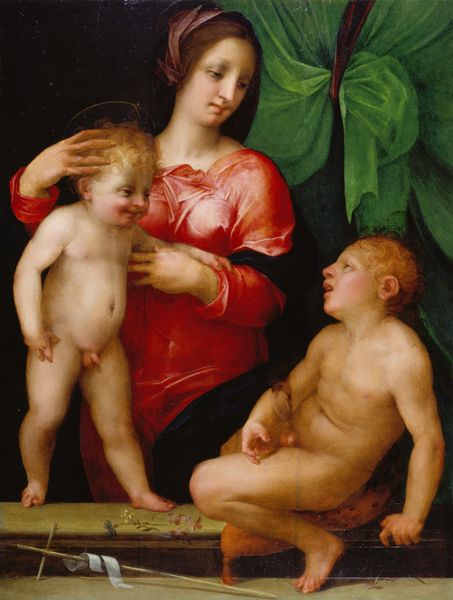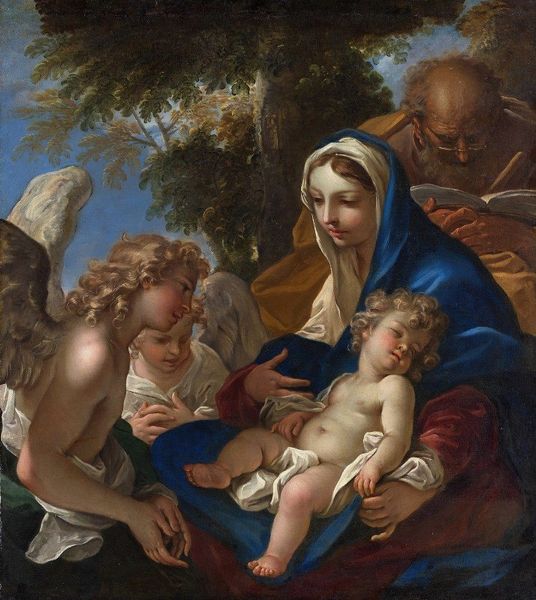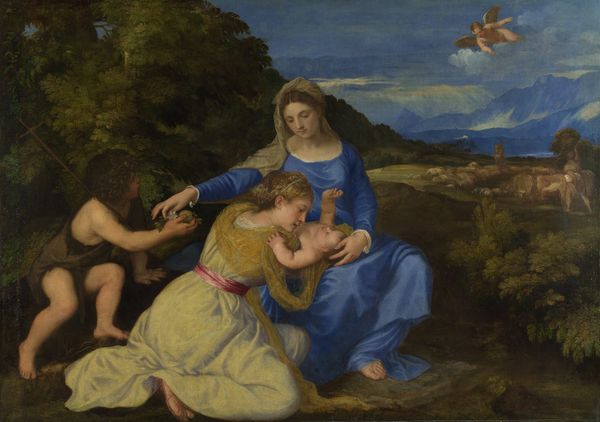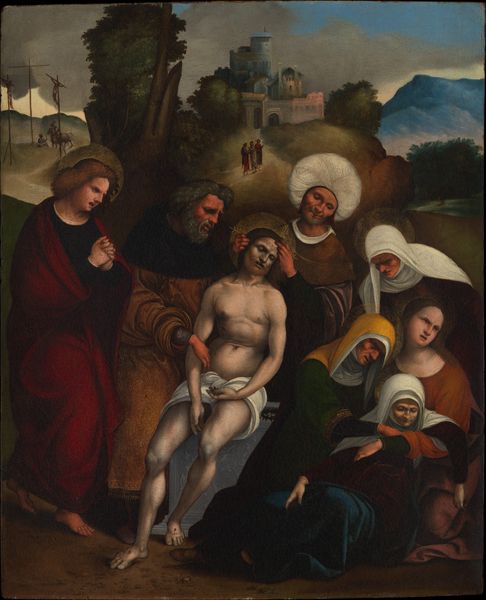
painting, oil-paint
#
baroque
#
painting
#
oil-paint
#
landscape
#
figuration
#
painting painterly
#
history-painting
#
italian-renaissance
Copyright: Public domain
Curator: Let’s turn our attention to Adam Elsheimer’s “Pietà,” created around 1605. It's oil paint, on…copper, if I’m not mistaken? Editor: The immediate feeling I get is one of immense sorrow, obviously. It’s dark, heavy with grief. I’m really struck by the almost tangible stillness; you can feel the weight of Christ in Mary's arms. Curator: Absolutely. What I find compelling here is how Elsheimer situates this incredibly intimate, devotional scene within a broader landscape tradition. This piece arrives just as landscape is starting to gain traction in the art world, and the placement almost universalizes the moment – situating Christ's sorrow in all creation. Editor: That combination of intimacy and expansive scale is intriguing. I'm drawn to the way Elsheimer has handled the material qualities of the piece; that translucent luminosity achieved with oils. The facture on copper gives it a certain jewel-like quality, a preciousness. The level of craft suggests that, for Elsheimer and perhaps the patrons, even this level of pathos has inherent material value. Curator: Well put! It's impossible to overlook the role of patronage in Elsheimer's trajectory. As a German artist working in Italy, he navigated a complex web of social expectations and religious commissions. I feel his positioning within the Roman art market profoundly shaped his approach, making him appeal to very specific tastes, including those associated with Counter-Reformation piety. Editor: It speaks volumes about the artist's material agency to embed this social and religious messaging, that he could navigate it this way. His method serves the message, so to speak. I would be curious to delve deeper into the availability of copper, the preparation involved. What determined Elsheimer's material choice and what informed its circulation among wealthy circles? Curator: Precisely, the cultural demand created and supported through trade! Understanding those material constraints provides insight into why Elsheimer became such a pivotal figure during his time. He captured a particular mood so in line with both religious and art market sentiments. Editor: In this case, observing Elsheimer's Pietà offers the rare and vital moment of pondering just how interwoven artistry, cultural ethos and, quite practically, the tools and techniques were during this historical moment. Curator: I completely agree. Seeing it this way opens a really refreshing angle on familiar and fundamental topics.
Comments
No comments
Be the first to comment and join the conversation on the ultimate creative platform.

